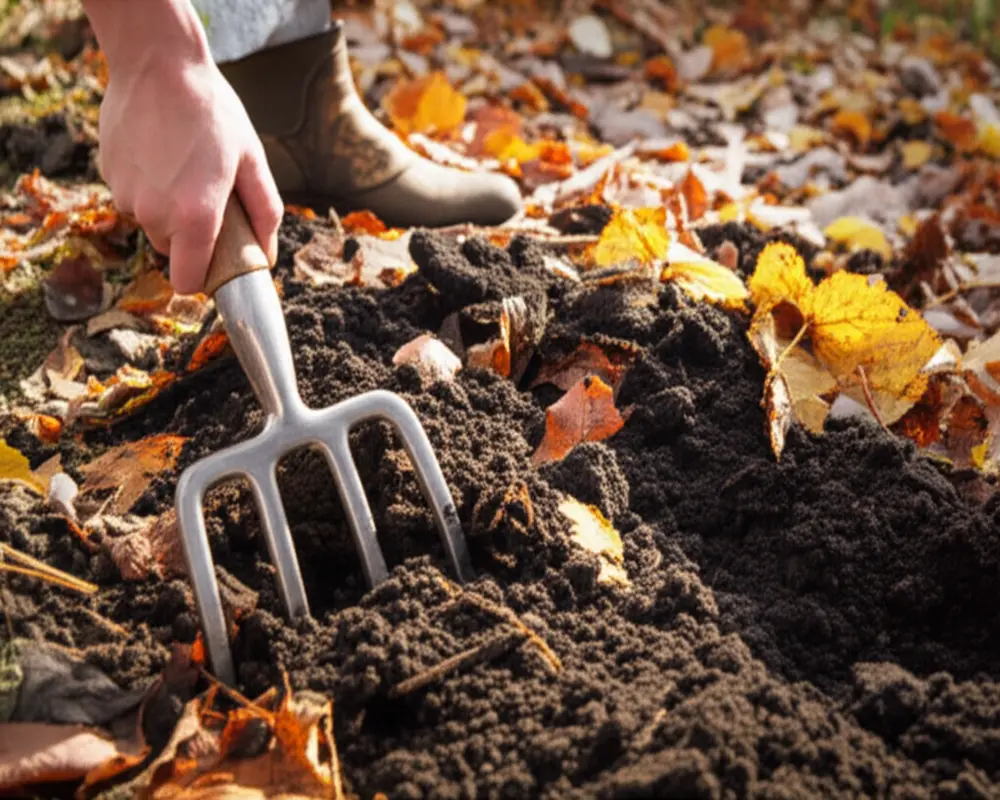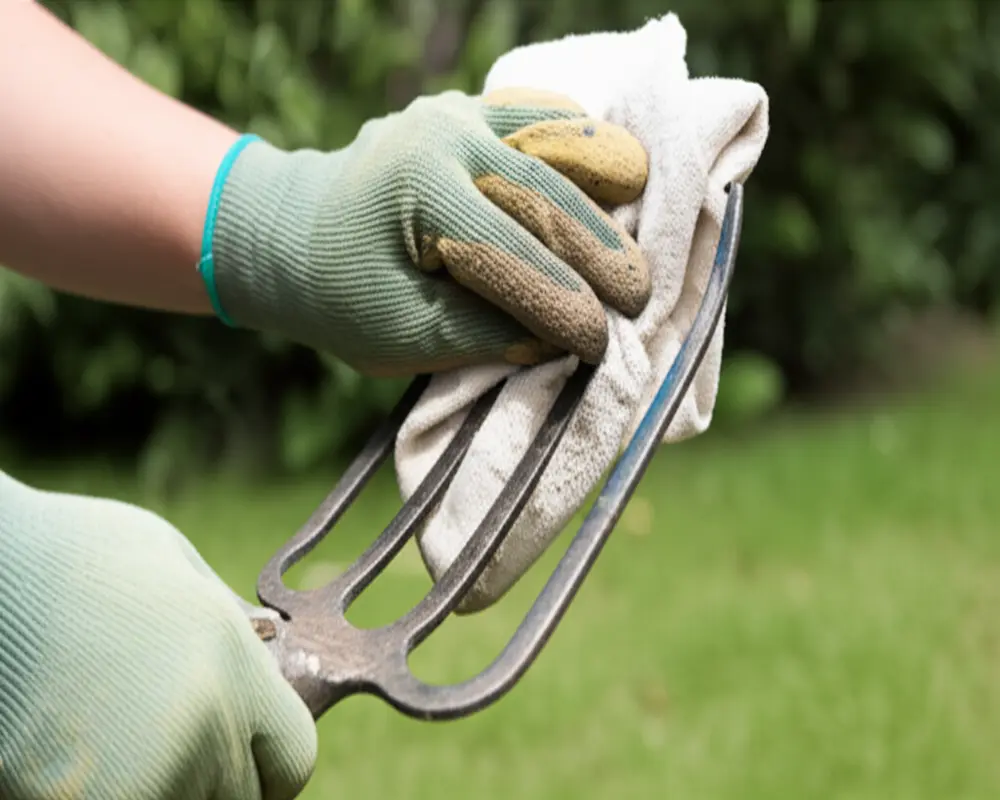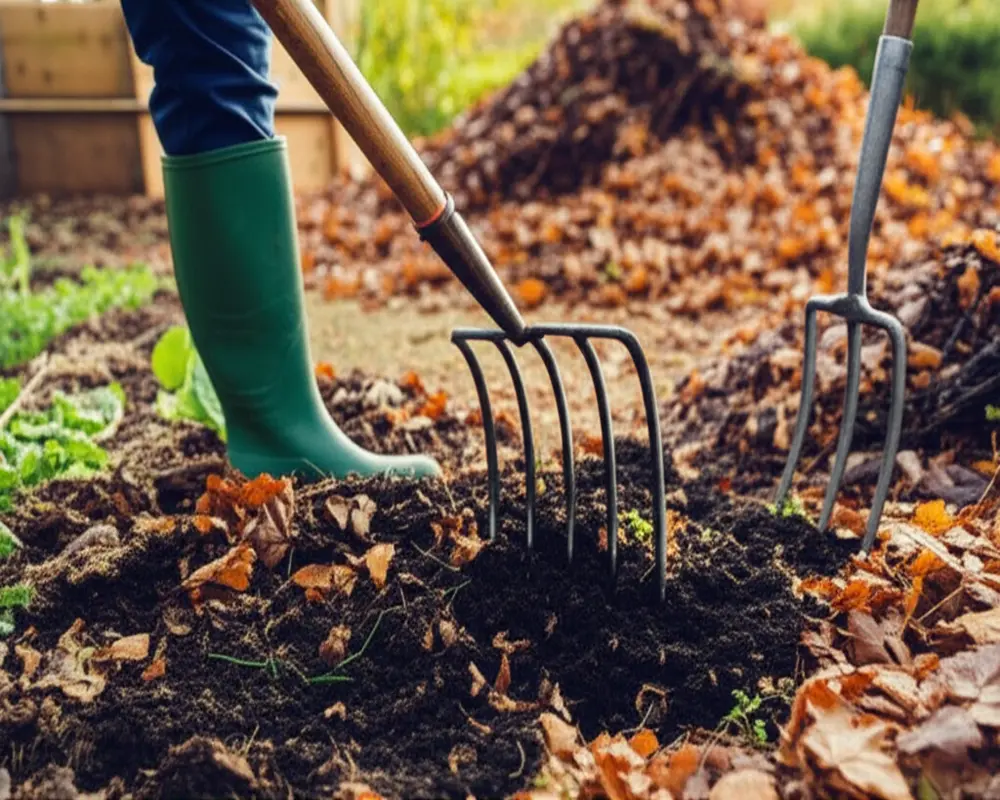Thank you for reading this post, don't forget to subscribe!
Fall Garden Fork Preparation: Soil Care & Tool Maintenance Guide 2025
Autumn signals an essential period for gardeners who desire a flourishing spring. Among the tasks demanding attention during the cooler months, fall garden fork preparation stands out as a pillar of effective soil care. Employing the right tools and techniques now dramatically enhances root health, soil structure, and overall garden vitality when the growing season revives. This expert guide delves into the reasons autumn soil work is so impactful, proper tool choices, practical soil aeration methods, organic matter incorporation, cover crop bed preparation, and crucial maintenance tips for your garden fork. Mastering these elements positions your garden for success ahead.
I. Introduction: Why Fall Garden Preparation is Crucial and Your Fork is Key
As plant growth slows and outdoor temperatures drop, attention turns to restoring and invigorating the garden’s foundational element—the soil. Regular fall garden fork preparation is indispensable because it:
- Improves soil structure by relieving compaction and enhancing aeration
- Boosts nutrient cycling and availability through organic amendments
- Suppresses weed emergence, lessening pressure for the upcoming season
- Reduces pest and disease carry-over by disturbing soil habitat
- Makes spring planting easier and more productive with well-prepared beds
Unlike shovels that tend to invert soil and disrupt its layers, a garden fork gently lifts and opens soil without deeply overturning it. This preserves the beneficial microorganisms and stratified soil horizons that support plant health.
The strategic timing and methodical use of the garden fork during fall create enduring benefits, simplifying tasks and raising crop vigor come spring growth. Embracing this approach taps into natural cycles for sustainable garden care.
II. Understanding Your Tool: Choosing the Right Fork for Fall Tasks
Equipping yourself with the correct garden fork tailored to your fall tasks increases efficiency and soil health drastically. Two primary types serve distinct functions:
Digging forks feature closely spaced, sturdy tines ideal for loosening compacted soil and incorporating amendments with minimal disturbance. Their design excels in aerating and working heavy soils in manageable sections.
Conversely, broadforks possess long handles and wide tine spreads, allowing a gardener to subsoil larger areas by using body weight without turning the soil. This tool is especially valuable for deeply aerating harder, densely packed garden beds.
Other forks, like pitchforks and border forks, have niche utility for moving organic material or lightly loosening surface soil but are less suited for primary soil preparation.
When selecting a fork, prioritize durable tines made from carbon steel or a strong alloy to resist bending. The handle should be comfortable and ergonomically designed, often wood or fiberglass, and correctly sized—generally between 36 to 48 inches (91-122 cm)—to balance leverage and comfort.
III. Core Fall Garden Fork Techniques for Soil Health
A. Gentle Aeration & Loosening Compacted Soil
Soil compaction is a natural autumn challenge, caused by summer foot traffic, machinery, or weather patterns like heavy rains compressing the ground. Compacted soil limits water infiltration, root growth, and oxygen supply.
Two effective fork techniques promote improved soil texture without disturbing soil life:
Method 1: Using a light aeration no-dig technique, gently insert the fork into the soil at intervals, move it to the side with a slight rocking motion to create air pockets, then withdraw. This method loosens the soil superficially and promotes gas exchange while preserving soil layers.

Method 2: Address localized hardpan or severe compaction by pushing the fork in deeper, leveraging your weight to penetrate, then gently working it side to side to break dense zones without flipping the soil. Targeted intervention maintains natural soil stratification.
B. Incorporating Organic Matter
The addition of organic matter such as well-aged compost, shredded leaves, and manure during fall enriches soil fertility and microbial life through natural decomposition over cooler months. When using your fork, lightly mix these amendments into the top 4–6 inches (10–15 cm) of soil with gentle twisting motions rather than turning the earth to avoid destroying fungal networks vital for nutrient sharing.
Adding organic material late in the season allows for full integration before spring planting, enhancing moisture retention and nutrient release. This technique meshes practical soil improvement with conserving soil biota.
C. Preparing Beds for Cover Crops
Planting cover crops in fall is a proven strategy for erosion control, nutrient locking, and weed suppression. Preparing the seedbed with a garden fork involves creating a friable, fine soil texture tailored to the cover crop’s seeding depth. For shallow-rooted species, light surface aeration suffices, while for robust cover crops, deeper fork preparation creates ideal conditions for root establishment.
This method supports long-term soil regeneration and reduces spring workloads significantly. For comprehensive information on cover crops and soil health, see the Garden Organic – Cover Crops and Soil Health resource.
IV. Advanced Applications & Problem Solving with Your Garden Fork
A. Subsoiling with Broadfork
When gardens suffer from deep compaction or are new beds needing thorough aeration, a broadfork excels. Designed to break up subsurface layers without turning soil, it preserves upper soil layers and organic layers intact. To use, insert the broadfork tines into the soil, then step on the crossbar to push deep and rock it gently to break soil clods. This process occurs often to a depth of 10–14 inches (25–36 cm), allowing roots greater freedom to access nutrients and moisture.

B. Managing Perennial Weeds
Perennial weeds pose a challenge in many fall garden beds. Using the garden fork to gently lift their root clumps minimizes soil disturbance and reduces fragmentation, which can promote regrowth. Extract the roots with minimal shaking to remove soil and prevent re-rooting. Combining this with fall cover cropping assists in smothering residual weed seedlings.
V. Long-Term Benefits of Fall Forking For Spring Garden
Consistently applying fall garden fork preparation generates these lasting advantages:
- Enhanced soil structure conducive to vigorous root penetration
- Improved drainage, reducing issues of springtime waterlogging common in clayey soils
- Increased nutrient availability due to enhanced decomposition of organic amendments and root action
- Lower weed pressure through disruption and pre-emption strategies
- Simplified and earlier plantings thanks to looser, friable soil
These changes contribute to holistically healthier soils that sustain plants longer and with less intervention.
VI. Garden Fork Maintenance and Storage
A. Post-Use Cleaning
After prolonged soil work, clean your garden fork by removing dirt and debris. Use a stiff brush and water to clear the tines and handle. Dry thoroughly to avoid corrosion. Having a clean tool preserves its longevity.
B. Rust Prevention and Treatment
Rust is a common adversary of garden forks, particularly those made from carbon steel. Regularly apply a light coat of oil—such as linseed or mineral oil—on metal parts after cleaning. In cases of developing rust, gently sand affected areas and apply a rust converter to stop further corrosion. Learn about comprehensive rust prevention in the context of garden tools in this garden fork rust prevention guide.

C. Sharpening Tines
Sharp tines penetrate soil with less effort. Use a metal file or sharpening stone to maintain a tapered edge on the tips. Be mindful to follow safety guidelines like wearing gloves and keeping your workshop organized during this process. Proper sharpening increases effectiveness and reduces user strain.
D. Handle Care
Inspect wooden handles for cracks or splinters and sand smooth where needed. Treat the handles with boiled linseed oil to prevent drying and splitting. Tighten or replace any loose fittings to ensure a sturdy tool. A reliable handle is key to ergonomic use and safety.
E. Proper Winter Storage
Store your garden fork indoors in a dry, sheltered spot to prevent moisture exposure that encourages rust and handle decay. Hanging tools by their heads rather than standing on the tines preserves tine shape and handle integrity. Avoid freezing temperatures impacting wooden handles or metal parts.
VII. Tips, Safety, and Best Practices for Fall Forking
A. Optimal Soil Moisture Conditions
The best time to work with your garden fork is when soil is moist but not waterlogged. Overly wet soil forms clumps and compacts easily, while dry soil is harder to penetrate. Test by squeezing a handful—soil should hold shape without crumbling or oozing water.
B. Ergonomics and Safety
Maintain proper posture by bending at the knees, keeping your back straight, and using your legs for lifting and pushing. Wear gloves to avoid blisters and closed-toe footwear to protect feet. Take breaks to avoid muscle strain during lengthy soil preparation.
C. Common Mistakes to Avoid
Avoid overwrought tilling or deep soil inversion that upsets beneficial soil organisms. Also, avoid working soil when excessively wet or frozen, which can damage soil structure. Follow gentle loosening and mixing techniques to preserve soil integrity.
D. Observing Soil and Adapting Techniques
Each garden’s soil is unique; observe moisture, compaction, and organic content to tailor your use of the fork. Adjust depth and frequency of forking based on these observations. This adaptive approach maximizes positive outcomes.
VIII. Conclusion: A Small Effort in Fall, a Big Payoff in Spring
Investing deliberate energy into fall garden fork preparation transforms dormant soil into a living, breathable, nutrient-rich foundation that welcomes spring planting. This seasonal ritual not only improves the physical properties of your garden soil but empowers you as a gardener to foster a resilient, productive environment. With proper tools, methods, and maintenance, the garden fork becomes more than an implement—it is an instrument of growth and renewal.
Embark on this autumnal task now and witness how a few careful passes of your garden fork can yield abundant rewards months ahead. Your garden—and your future self—will thank you.
For deeper insights into effective garden fork usage and care, explore the detailed garden fork for beginners guide. For thorough soil preparation methods, consult the University of Minnesota Extension – Soil Preparation.

